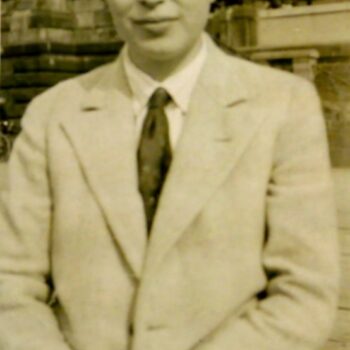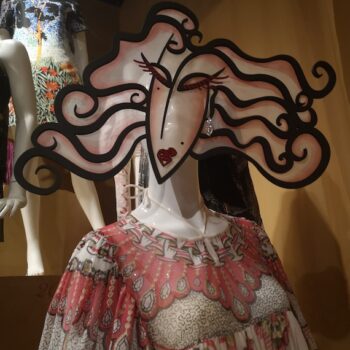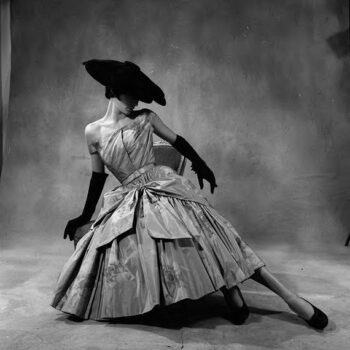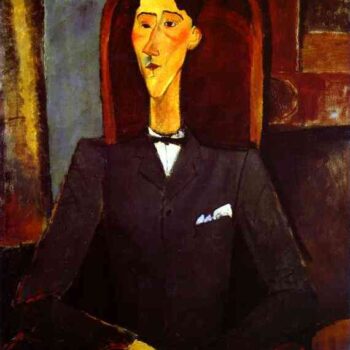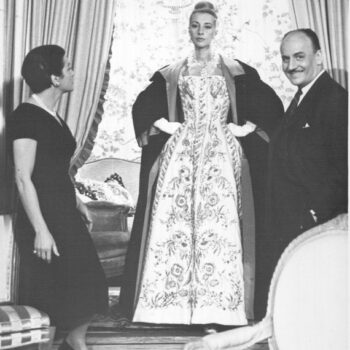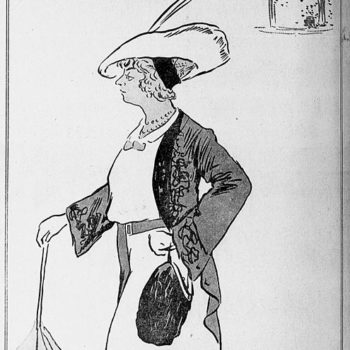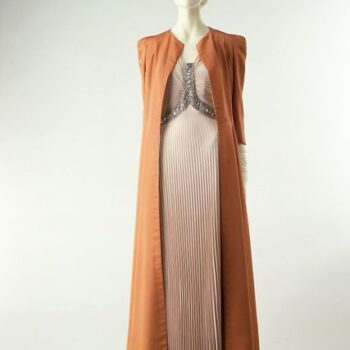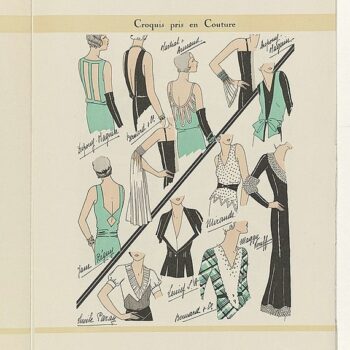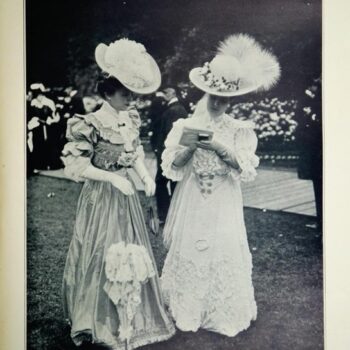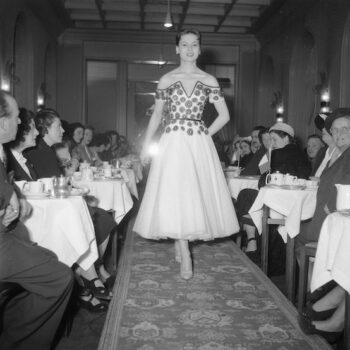Charles James – Incredible Couturiers
March 19, 2017Charles James is a surprisingly controversial figure in fashion. Some say he was a genius, even a tortured one, and others say he wasn’t all that. Some say that his gowns created goddesses out of women, but for others, his fashion was a massive step back for women’s rights.
What is undisputed is that the man himself was incredibly difficult to get along with, trailing lawsuits behind him like the jar of moths that he once threatened to release amongst a fur manufacturer’s wares if they didn’t get his designs right. Almost every business association he made seemed to end in regrets with Charles James either suing them for piracy or non-payment, or them suing him for reneging on promised designs, or refusing to put his label on already manufactured goods because he couldn’t put his name to something imperfect.
He was also a perfectionist when it came to creating the fabulous couture gowns for which he is famous.Charles Jameswould make and re-make them until the event for which they had been ordered had been and gone. Having been paid upfront for them, the designer was totally unrepentant. Clients indulgently described him as far more like an artist than a dressmaker.
Charles James – dressed the aristocracy
The untrained and unconventional designer dressed many of the Bloomsbury group, aristocrat Diana Mitford, film star Gypsy Rose Lee, socialite jeweller Elsa Peretti and vast amounts of society beauties in the elaborate haute couture that made his name. He inspired his friend Christian Dior’s hourglass shaped New Look, which was celebrated in the late 1950s as a totally, well, new look.
But Charles James had been creating dresses with tiny waists and exaggerated bosoms and hips since the 1930s, when a more athletic shape was much more en vogue. In fact, some of his designs from the 1930s looked liked dresses Marilyn Monroe would wear in the 1950s, and his vibrantly coloured asymmetric taffeta gowns of the 1950s looked liked dresses that found their metier 30 years later in the 1980s.
Charles James – A fan of the Hourglass
Charles James, having briefly studied the corsets, bustles and crinolines of historical costume, was obsessed with an hourglass shape for women, and stated that his clothes “correct[ed] the deficiencies of the human figure”. It is this that seemed like a step back for women – having gradually escaped heavy and restrictive underpinnings for the last forty years or so, James stuffed them right back into them.
His couture totally remodelled a client’s body to give them a waist and bosom, even if they had none. “Charlie was sometimes so entranced by the shape he was ‘sculpting’ over one’s own shape, that when the dress arrived finished it was impossible to get into. It existed on its own.” explained Mary Hutchinson, one of his clients and a member of the Bloomsbury group.
Unconventional methods
Charles James’ “corrections” took the form of layers and layers of interior padding and corseting structures which included canvas and horsehair, metal, polythene, cellophane and netting. Some of his skirts could weigh up to 10 kilos, but they were evenly balanced on the hips so that the wearer could dance whilst wearing them.
They were designed, not by converting fashion sketches into flat patterns as is the norm, or even by draping fabric directly onto a human shaped dummy, as some designers do: Charles sculpted the entire dress in his studio. Starting out with a standard torso shape he then padded and expanded it with rags, cotton wool, newspapers and whatever was to hand to create the form of a ballgown, massive flounces and trailing tails and all. His sculpture was then hardened with plaster of paris to create a rigid mould. These full-scale, human sized dress forms could be up to two metres square.
When the shape of the dress had been made, James then set about making his inner structure, which was moulded over this form – as a hat is moulded over a hat block, James heated fabrics and polythene boning to make them plastic, manipulating and smoothing them into shape so that when they cooled they set rigid into the shape of the mould. He also used quilting, flounces and padding to gain his desired shape. This complicated inner structure was then removed from the mould and covered with his beautiful and finely finished outer layer of coloured silks. The final step was considerate – a lining of humble and comfortable cotton flannel was added to sit next to the skin.
Charles James – Self Taught
This way of making clothes was a bit bonkers and in some way re-inventing the wheel, because other, less elaborate ways exist in established couture techniques. But although Charles James met and was friends with the couturiers like Coco Chanel, Elsa Schiaparelli and Paul Poiret, and may even have seen them at work in their ateliers, he didn’t,as he later claimed, study under them. Later on, when he briefly taught fashion students, he would refer to specialised French couture techniques, proving he knew their names, but he was using the wrong ones.
Spirals and Zips
But that isn’t to say that his actual techniques didn’t work. James was very interested in using the grain of the fabric, allowing it to stretch when cut on the bias as Madeline Vionnet, his contemporary, was famous for. (The difference was that Vionnet expertly made her fabric follow the natural female form, whilst James was making his conform to the rigid underpinnings he had created).
Charles James wasn’t interested in following the rules (always assuming he knew them in the first place) and just wanted the fabric to fit tightly or fall exactly how he wanted it to, so often his darts were placed more to facilitate this than in any conventional or indeed symmetrical positions.
A lot of Charles’ work was asymmetric. He often worked in a spiral around the body, rather than straight lines up and down it as is more usual. His famous “Taxi” dress is a wrap dress made like this, a design that is wound around the body and so named because it could theoretically be taken off in a taxi. A later version also had a visible zip fastening, which made it even more racy. Zips were a very new and dubious fastening in the 1930s, and if they were used at all it was in a hidden way. Both James and fellow designer Schiaparelli delighted in putting them very visibly on the outside of a garment.
Charles James – A difficult character
Charles James did all this because, it seemed, he just didn’t care what people thought. But this made him hard to live and work with. He won prestigious awards such as the Coty American fashion Critics Award in 1950, as the fashion industry celebrated his talents, and later returned certain of them after falling out with the panels that presented them. People supported and promoted him, but he did little to co-operate.
In 1944, Elizabeth Arden, the massively successful businesswoman who was then branching out from her base in makeup sales asked him to become the creative director of her new fashion salon. Great things were promised and advertisements trumpeted the partnership. But the idea fell through after just one season with disagreements about everything from the decor of the salons to the budget.
Frequent Change of Scenery
Charles moved over and over again, because although his upbringing and inclination attracted him to the high life and he often lived in very expensive hotels all over New York, Paris and London, he could not pay the bills because of his quarrels with manufacturers who would have been his bread and butter. He also moved his business premises often and was made bankrupt several times, each time stubbornly re-starting the business in a slightly different guise. Nor did his failures in manufacturing prevent him from making new deals with new manufacturers.
He designed ready to wear womenswear, children’s wear and tried to branch out into accessories, but never really successfully licensed his name.His family was rich enough to support him independently, but due to an early quarrel with his father this did not materialise.
Charles James – Wealthy Beginnings
Charles James was born in 1906 to a wealthy Chicago socialite and a British army captain, later promoted to Lieutenant colonel and a military instructor at Sandhurst. He spent his first years at the family’s massive estate near London, and went to boarding school in Britain, also spending a few terms in America, underscoring his bi-national identity. The family moved to an equally opulent home with servants in Chelsea while he was growing up.
When the time came Charles James was sent to Harrow prep school, where he had a book of his poetry, complete with his own illustrations, published at his own expense. He already studied the piano and music composition since the age of five,and now he also got into theatre. He loved acting in plays and started dressing up and wearing makeup off stage as well as on. He also became openly gay, and it was something connected to this that lead to him leaving Harrow a year early, probably at his father’s insistence.
Cut off from his inheritance
He was sent to study in Bordeaux in France, then for a few months of painting in Scotland. Finally he was placed in a business in Chicago, first as a clerk and then in the architecture department, but he left abruptly. His father, who has connections with the company he was working for, is so annoyed that he limited Charles’ access to the family money and virtually ceased speaking to him.
When, out of nowhere Charles announced that he wanted to start a millinery business using an advance against an inheritance from a godparent, he wasn’t allowed to use the family name. Charles chose Charles Boucheron, eventually changing the label to his own name anyway. He was soon seen running around Paris modelling his own hats. His mother and sisters were banned by his father from patronising the business, but they eagerly send their rich friends and other family. Charles did dress his sister Frances for her wedding day in 1929.
Influential friends
Whilst at Harrow, Charles met the photographer and taste maker Cecil Beaton, who would become instrumental to his early media success. Beaton introduced him to the staff of Vogue, and photographed and styled his work frequently. But even Beaton, a loyal friend, wrote in his diary “His talent was marvellous; his wit bitter… No one could cope with his temperament for long.”
Charles also met Stephen Tennant of the Bloomsbury group there. He designed and made clothes for him, including a satin pyjama suit that was meant as day wear that was described as exquisite.
Charles quickly became friends with the rest of the very rich, aristocratic Bloomsbury group, and several of them become his key clients. They in turn introduced him to many other socialites, both in Britain and the US. Charles also knew and worked with the artist Jean Cocteau, who designed at least one print for him.
Charles was always flamboyant, and it started to come though in editorials about his work. One Harper’s Bazaar article from 1937 pictures the slender and very pretty young Charles in a hotel room in tiny shorts and a tight long sleeve t-shirt, waving a pair of scissors about as the caption reads “CREATIVE AGONY”.
Charles James – Marriage and Children
Despite being openly gay, he married Nancy Lee Gregory, an heiress from Kansas City who was 20 years younger than him, in 1954 – some assumed for her money, he said for love. Rumour has it that he was involved with her brother first. They had two children, Charles Jnr and Louise. Her money did give his business a boost, but after seven years of moving with him, from hotel room to hotel room, and supporting his many re-starts in business, it was too much for her and in 1961 she moved back to Kansas with the children. The couple divorced but stayed friendly for the rest of their lives.
Chelsea Hotel
Charles James ended his life as he had lived it – flamboyantly and in a hotel. However, this hotel was not the Dorchester or the Ritz but the always down-at-hell Chelsea Hotel. The Chelsea Hotel has always been famous for the incredible people you’d find behind each of its doors – Andy Warhol’s Superstars lived there, as did Lou Reed, Dylan Thomas and Allen Ginsberg. But that was in the 1960s, and by the end of the 1970s the Chelsea Hotel was a rather sad place. However, James had three rooms there, where he lived and worked.
One day the young fashion illustrator Antonio Lopez opened his door and found him. He begged to illustrate some of James’ work, and since James always had an eye for posterity (he had long since got his clients to donate some of his best work to New York’s Metropolitan Museum) he happily agreed. The pair had an excellent time, inviting old clients and friends to bring themselves and their gowns to be modelled and drawn by Lopez, whist Charles pointed out the important points to be highlighted and recorded. This resulted in a wonderful archive of hundreds of drawings. Charles James worked on new designs or in re-working old designs right up until his death, but by then his work had mostly fallen out of favour. He died in 1978 at the age of 72.




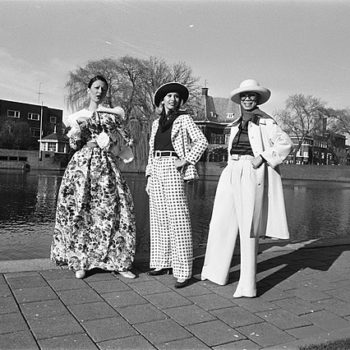
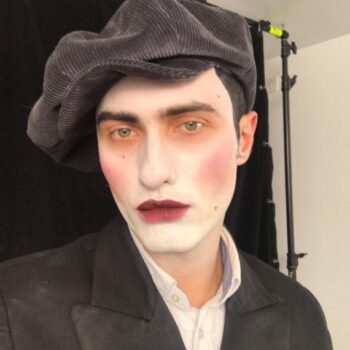
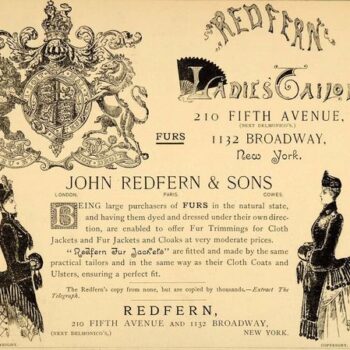
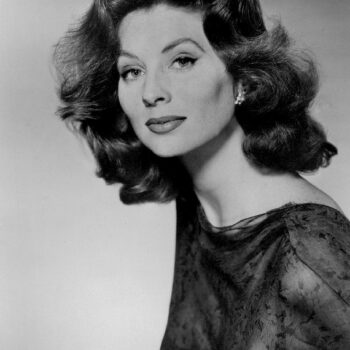

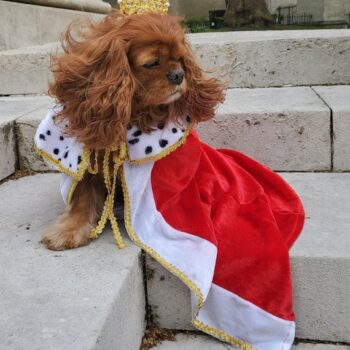
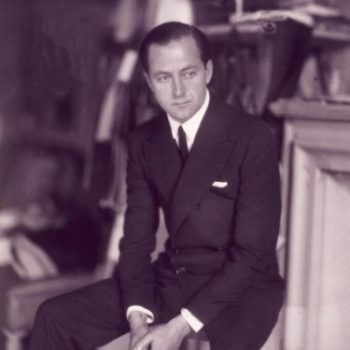
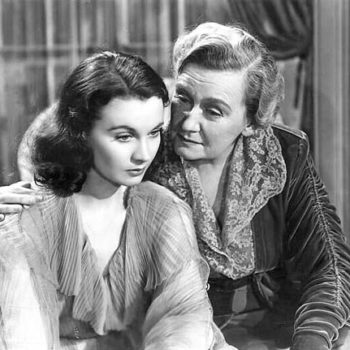
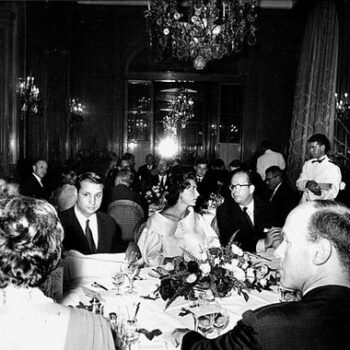

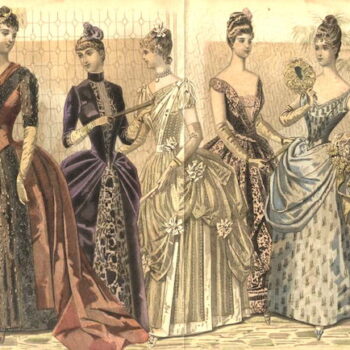
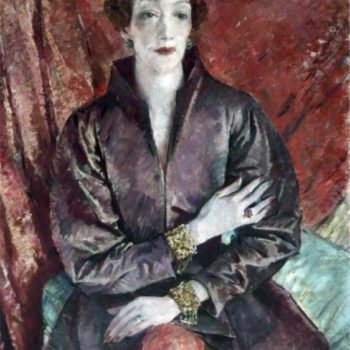
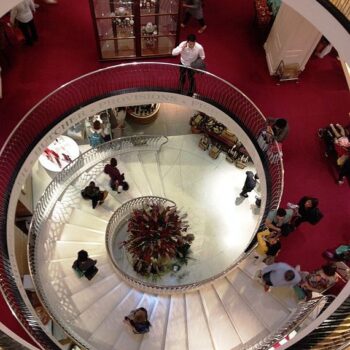
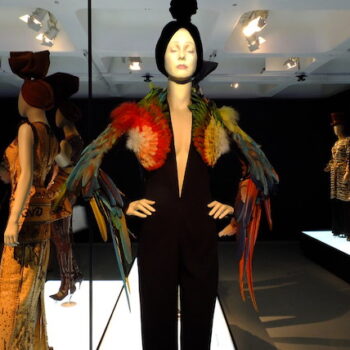
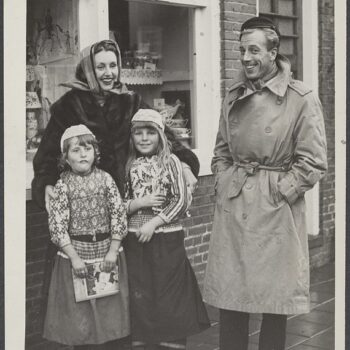
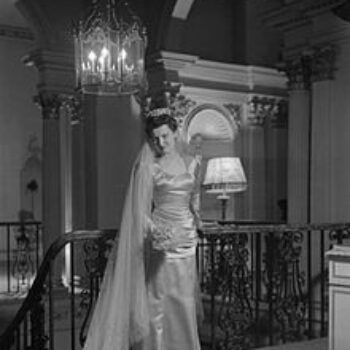
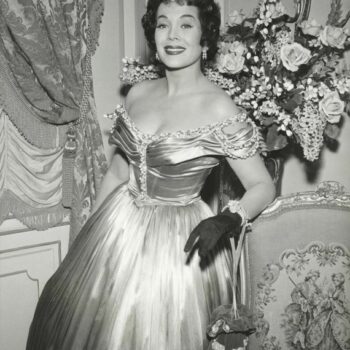
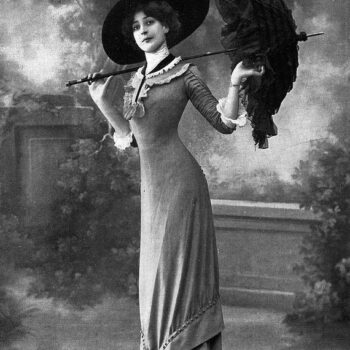
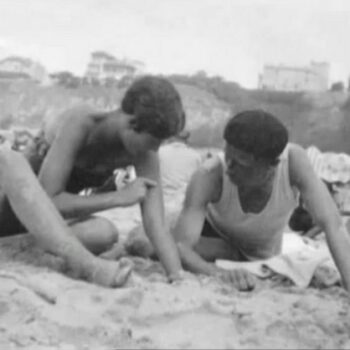
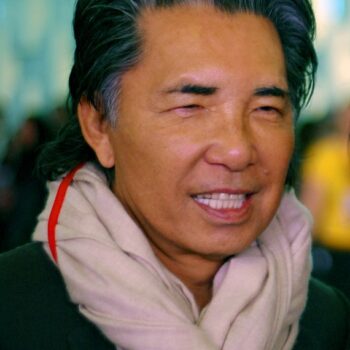
![Azzedine Alaïalogo. By alaia.fr (alaia.fr) [Public domain], via Wikimedia Commons](https://www.blue17.co.uk/wp-content/uploads/2017/11/Azzedine_Alaïa__Alaia__corporate_logo-350x350.png)
